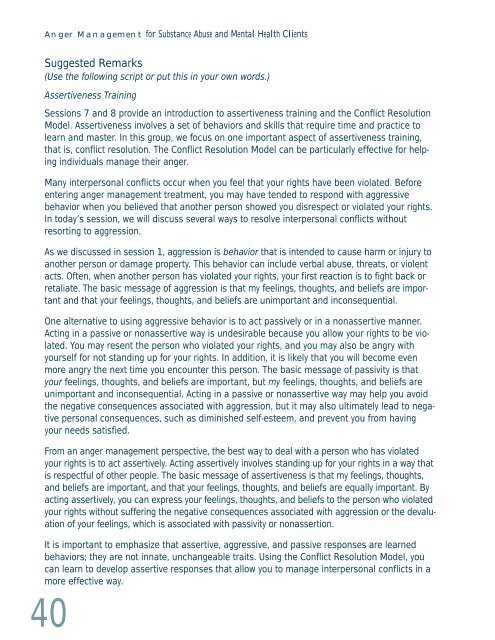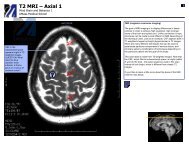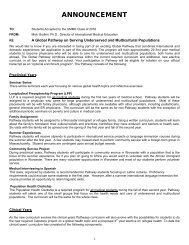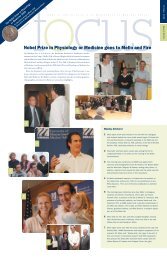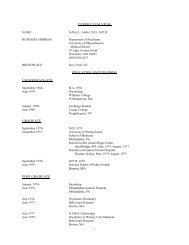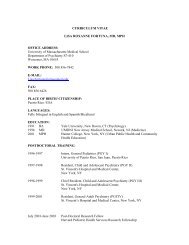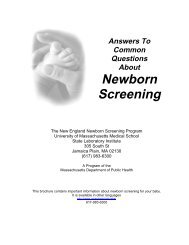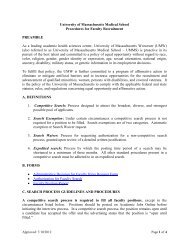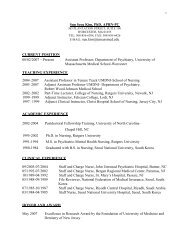Anger Management Manual - the ATTC Network
Anger Management Manual - the ATTC Network
Anger Management Manual - the ATTC Network
Create successful ePaper yourself
Turn your PDF publications into a flip-book with our unique Google optimized e-Paper software.
<strong>Anger</strong> <strong>Management</strong> for Substance Abuse and Mental Health Clients<br />
Suggested Remarks<br />
(Use <strong>the</strong> following script or put this in your own words.)<br />
Assertiveness Training<br />
Sessions 7 and 8 provide an introduction to assertiveness training and <strong>the</strong> Conflict Resolution<br />
Model. Assertiveness involves a set of behaviors and skills that require time and practice to<br />
learn and master. In this group, we focus on one important aspect of assertiveness training,<br />
that is, conflict resolution. The Conflict Resolution Model can be particularly effective for helping<br />
individuals manage <strong>the</strong>ir anger.<br />
Many interpersonal conflicts occur when you feel that your rights have been violated. Before<br />
entering anger management treatment, you may have tended to respond with aggressive<br />
behavior when you believed that ano<strong>the</strong>r person showed you disrespect or violated your rights.<br />
In today’s session, we will discuss several ways to resolve interpersonal conflicts without<br />
resorting to aggression.<br />
As we discussed in session 1, aggression is behavior that is intended to cause harm or injury to<br />
ano<strong>the</strong>r person or damage property. This behavior can include verbal abuse, threats, or violent<br />
acts. Often, when ano<strong>the</strong>r person has violated your rights, your first reaction is to fight back or<br />
retaliate. The basic message of aggression is that my feelings, thoughts, and beliefs are important<br />
and that your feelings, thoughts, and beliefs are unimportant and inconsequential.<br />
One alternative to using aggressive behavior is to act passively or in a nonassertive manner.<br />
Acting in a passive or nonassertive way is undesirable because you allow your rights to be violated.<br />
You may resent <strong>the</strong> person who violated your rights, and you may also be angry with<br />
yourself for not standing up for your rights. In addition, it is likely that you will become even<br />
more angry <strong>the</strong> next time you encounter this person. The basic message of passivity is that<br />
your feelings, thoughts, and beliefs are important, but my feelings, thoughts, and beliefs are<br />
unimportant and inconsequential. Acting in a passive or nonassertive way may help you avoid<br />
<strong>the</strong> negative consequences associated with aggression, but it may also ultimately lead to negative<br />
personal consequences, such as diminished self-esteem, and prevent you from having<br />
your needs satisfied.<br />
From an anger management perspective, <strong>the</strong> best way to deal with a person who has violated<br />
your rights is to act assertively. Acting assertively involves standing up for your rights in a way that<br />
is respectful of o<strong>the</strong>r people. The basic message of assertiveness is that my feelings, thoughts,<br />
and beliefs are important, and that your feelings, thoughts, and beliefs are equally important. By<br />
acting assertively, you can express your feelings, thoughts, and beliefs to <strong>the</strong> person who violated<br />
your rights without suffering <strong>the</strong> negative consequences associated with aggression or <strong>the</strong> devaluation<br />
of your feelings, which is associated with passivity or nonassertion.<br />
It is important to emphasize that assertive, aggressive, and passive responses are learned<br />
behaviors; <strong>the</strong>y are not innate, unchangeable traits. Using <strong>the</strong> Conflict Resolution Model, you<br />
can learn to develop assertive responses that allow you to manage interpersonal conflicts in a<br />
more effective way.<br />
40


